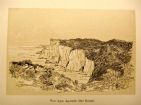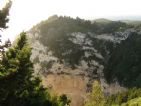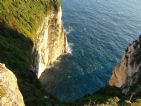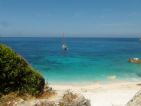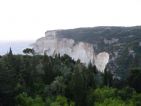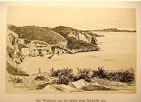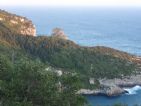
From Ortholiton to Kastanjida
Comparisson reports are under license of:

Lo que dice el Arxiduc:
“The view from Ortolithon is majestic. We can see Holm oaks, blackberries, carob trees covered in honeysuckle, cypresses, olive trees, mastics, and laburnum [= Cytisus laburnum or goldregen (golden rain)]. Myrtle, broom and euphorbias also grow in this poor soil.
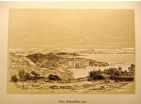
“The road leaves from Agios Spiridion in Mizalatika towards Romiti along a valley with short terraces covered in pretty olive trees and a lot of ferns. To the left is a small olive grove where –they say– the spring starts. The top of the walls are covered in thorny bushes lining the paved road. The latter also has steps which lead down to a water deposit surrounded by pretty stone walls. We find a double wall next to a fountain with a pretty square deposit underneath and two strong pointed arches on the top part. The water comes out from both, especially the one on the right. The excess water drips to the sea above the cliffs on the coast.
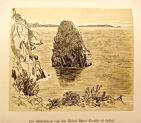
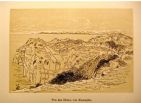
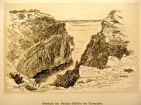
Datos proyecto Nixe III:
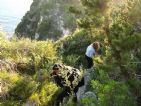 On this excursion, we reached Magazià first and then headed north to get to the area around Kastanjida. We went along small paths offering beautiful sights combining vegetation with cliffs and the sea. In addition, the sun was setting. Here we see an image from the heights of Kastanjida.
On this excursion, we reached Magazià first and then headed north to get to the area around Kastanjida. We went along small paths offering beautiful sights combining vegetation with cliffs and the sea. In addition, the sun was setting. Here we see an image from the heights of Kastanjida.
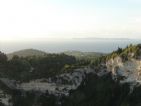 Since the day is fairly clear, we can also see the coast of Corfu in the distance.
Since the day is fairly clear, we can also see the coast of Corfu in the distance.
A short while later we reached the cove at Phokas. It’s surprising how tall the cliffs are. We noticed a lot more vegetation along this part of the coast than that the Archduke reflected in his etchings.
Heading back towards the south, we reached Eremiti. The same fountain exists, but the cistern is today covered. In the cove we see a large sandy beach which was formed not long ago when a part of the mountainside fell down. The beach used to consist of pebbles years ago. We climbed up again to go to Ayos Apostolis where there is a restaurant and look-out point today which tourists visit at sunset. From there we can see the Eremiti cliffs and, in effect, we can see that a part has collapsed.










